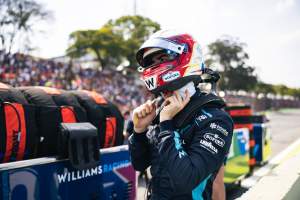Up Next

Nicholas Latifi has more reason than most to blame circumstances outside of his control for his lack of results in Formula 1. Without a drive for 2023, his grand prix career is likely over at 27 after three seasons driving for a Williams team at a low ebb with just a trio of points finishes to show for his 61 starts.
But the Canadian isn’t that kind of character. He talks about the car problems, but is also painfully honest about his own weaknesses, including the one that made it difficult to maximise the potential of his limited machinery.
Latifi’s explanation is that “my window is just not as big as it needed to be”. This refers to his adaptability in terms of the range of balance characteristics he could deal with, something the Williams often fell outside of.
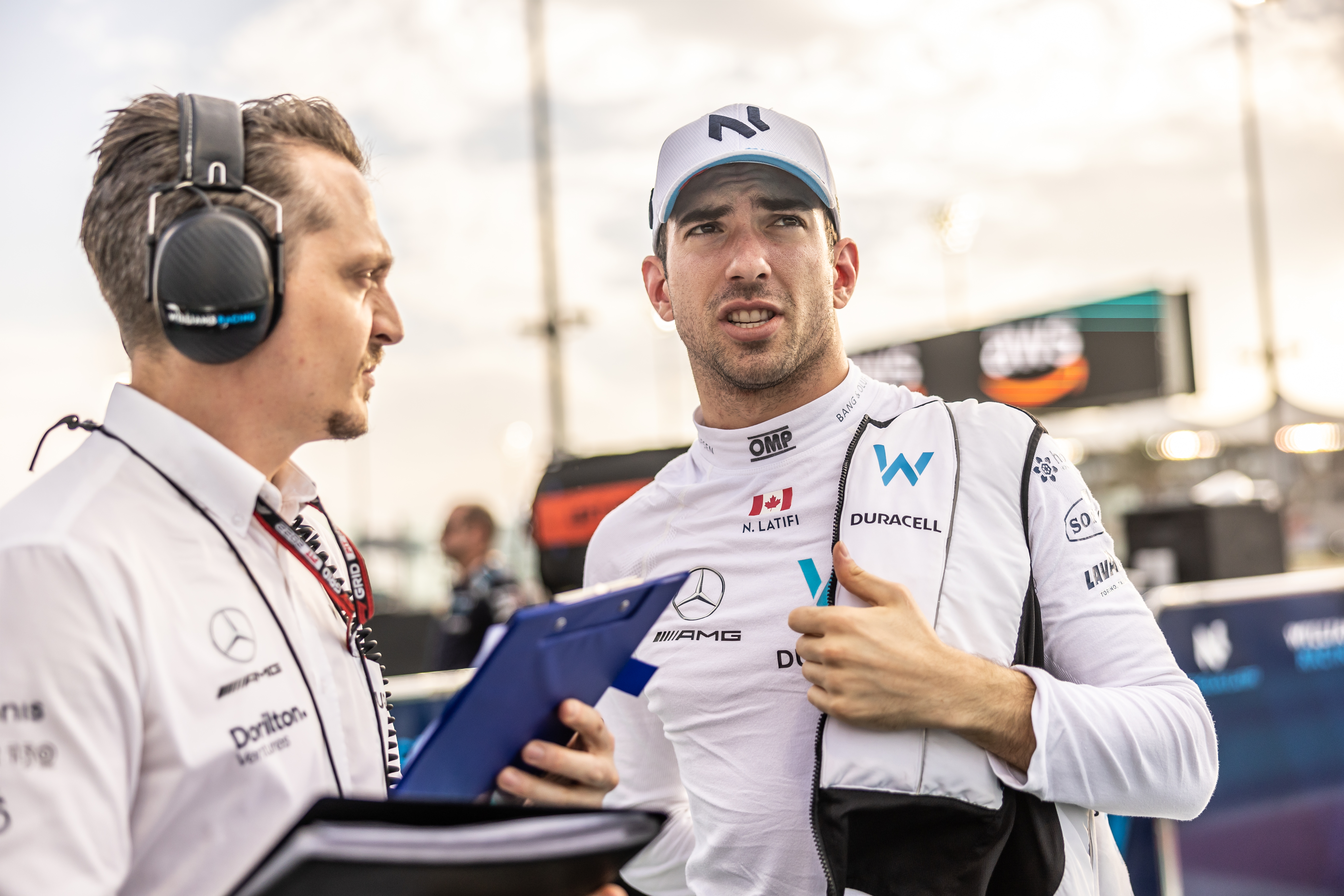
Well get into the detail of that with Latifi’s help. He’s never struggled with words during his F1 career, as he’s a talkative driver content to comment honestly and insightfully about his own performance. That reflects the fact he’s also well-regarded for his technical feedback given he’s an intelligent, thoughtful character who is adept at delving into his own strengths and weaknesses.
But he is also a driver with a frustrating ability to show flashes of genuine pace during a weekend, yet very often end up right at the back after failing to join the dots of performance.
“It’s a fair statement,” says Latifi when asked by The Race about this trend. “The rookie year was learning, then last year there were times when it was visibly clear that the pace was there, but also sometimes from the outside from the results it didn’t look like it was there.
“This year was a bit of an outlier for various reasons. But to summarise, when I get the feeling I want from the car, that gives me confidence to drive it fast, I can just drive instinctively and not have to think so much, I know I can be as quick as anybody. The problem was that’s not been as often as it needed to be in Formula 1.
“Arguably, that window has been unachievable with the package I’ve had the past few years, because I’ve never felt the car suited my driving style. It’s not that George [Russell, team-mate in 2020-21] and Alex [Albon, team-mate this year] say the car is good, but they’ve just been able to cope with it better and arguably their window of where they can get the most out of it is broader than what my window is.
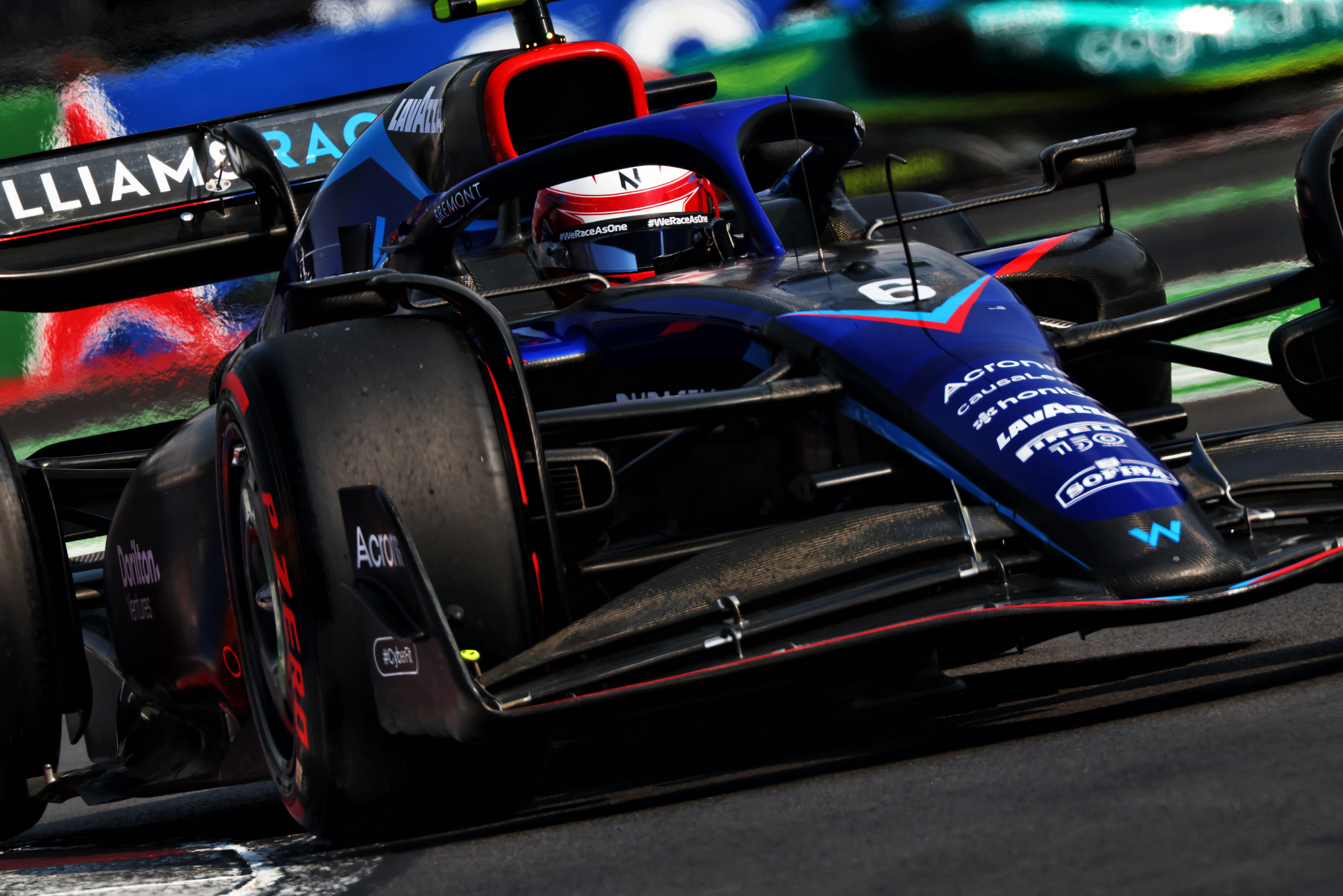
“I think that’s the reality of it, speaking openly and honestly. When I get the feeling that I need, I know I can be as quick as anybody, I’ve shown that. But it’s just not as consistent as it needed to be with the limitations I felt with this car, which go completely against everything I want.”
To say he’s as quick as anybody given the right characteristics is perhaps stretching a point, but perhaps it’s more accurate to say he’s capable of being quicker than the timesheets often suggested. Fundamentally what he says stands up based on what we’ve seen during his years as a race, and initially reserve driver for Williams. That doesn’t mean he was hard done by, it simply reflects the reality that adaptability and the capacity to thrive in less-than-ideal circumstances are key to separating the great from the good in F1.
So what does Latifi need from the car? Unsurprisingly, it relates to the characteristics of the entry phase into the corner. He talks of wanting to create his own front end by attacking corners on the brakes, in simple terms loading up the front by standing the car on its nose to give the bite to rotate the car.
This is not unusual given this is the point where the limiting behaviour of a car is normally most pronounced. As Latifi explains, he wants to attack on the brakes – something that has not proved easy. This means not only in how late it’s possible to brake, but also the rear-end stability once you have turned in.
“I’ve always been someone who likes to attack the corners on the entry and be very late on the brakes,” says Latifi. “You cannot be very late on the brakes in the Williams. For us, it feels late. and if you compare relative to my team-mates I’m still late on the brakes but I think anyone who’s driven behind us knows it’s probably the weakest part of our car.
“I inherently create my own front end because I like to trail the brakes into the corners. We have two issues. One, our car just locks the front tyres extremely easily as soon as you start to turn with brakes, which has been something there for the four years that I’ve been a part of the team.
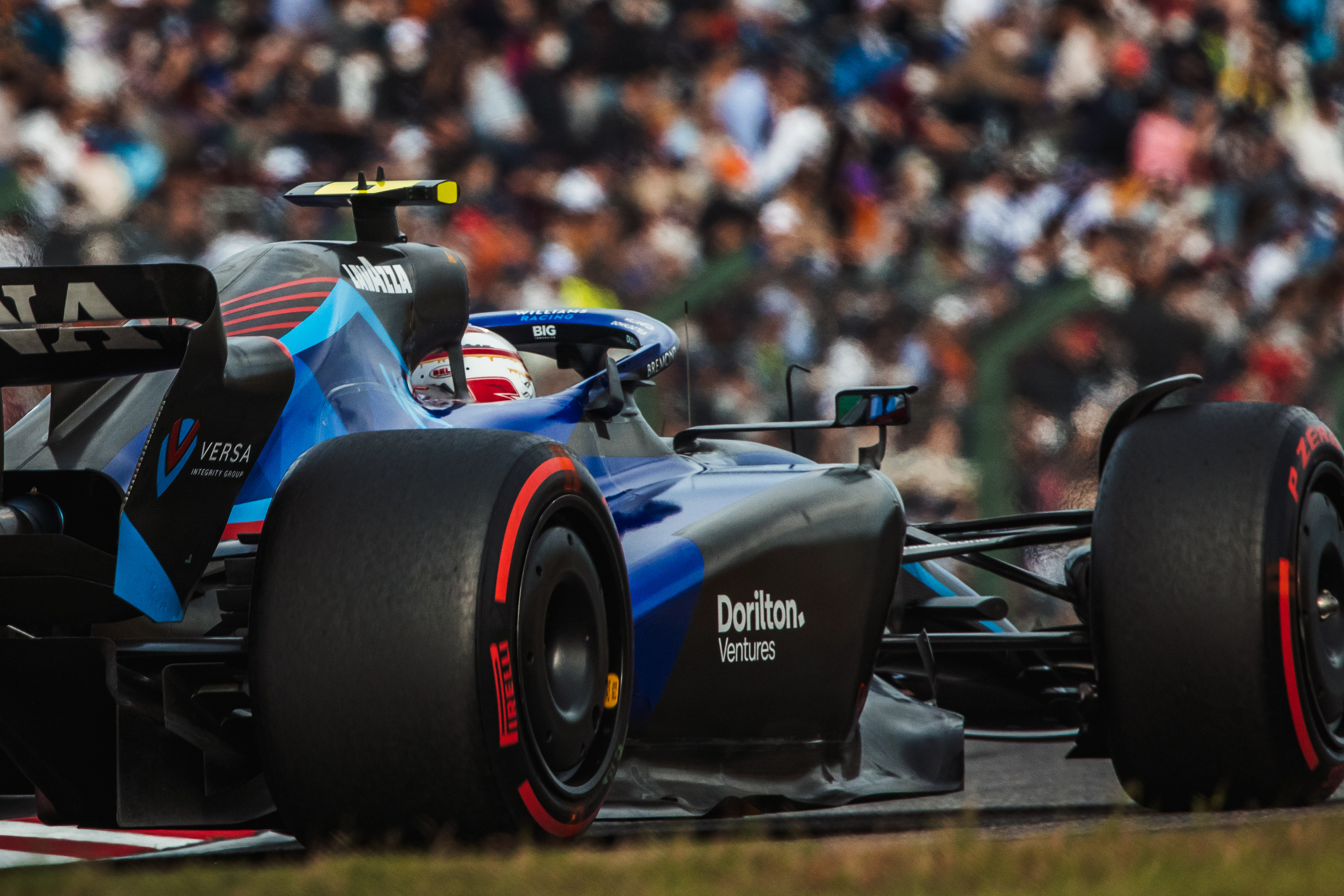
“It’s obviously very unstable in the rear on entries as well. Attacking the corners more just amplifies the rear instability. Combined with that, when I try and trail brake into the corner, you just lock the front. You feel like you’re shackled in how you have to drive.
“We rarely ever make a change that improves the car all around. It’s always improving this area at the expense of that area, can you cope with that instability it’s creating to get the extra front end there? So you often feel very restricted on what you can do.
“We know what we want, we just are not able to, we just don’t have the tools to do that whether that’s because of set-up or just our fundamental car characteristics.”
Latifi has enjoyed some high points despite his struggles. Despite George Russell’s occasional, frustrated attempts to score points in his first 18 months with Williams, Latifi was actually the first to get on the scoreboard – albeit only by just over a second when he was classified seventh, ahead of Russell, in last year’s Hungarian Grand Prix.
He followed that up with ninth place in the farcical Belgian Grand Prix, but had to wait over a year for his third and final points finish with ninth in the wet at Suzuka in October. For much of the rest of his career, he largely toiled in obscurity outside the points while his team-mates caught the eye – including one-off stand-in Nyck de Vries at Monza this year.
Latifi was comprehensively outpaced by his team-mates in qualifying in all three seasons, by just over half a second on average versus Russell in 2020, a margin that dropped to just over three tenths in 2021. This year, the average deficit to Albon was four-tenths. All of these figures are based on dry conditions where a fair comparison can be made.
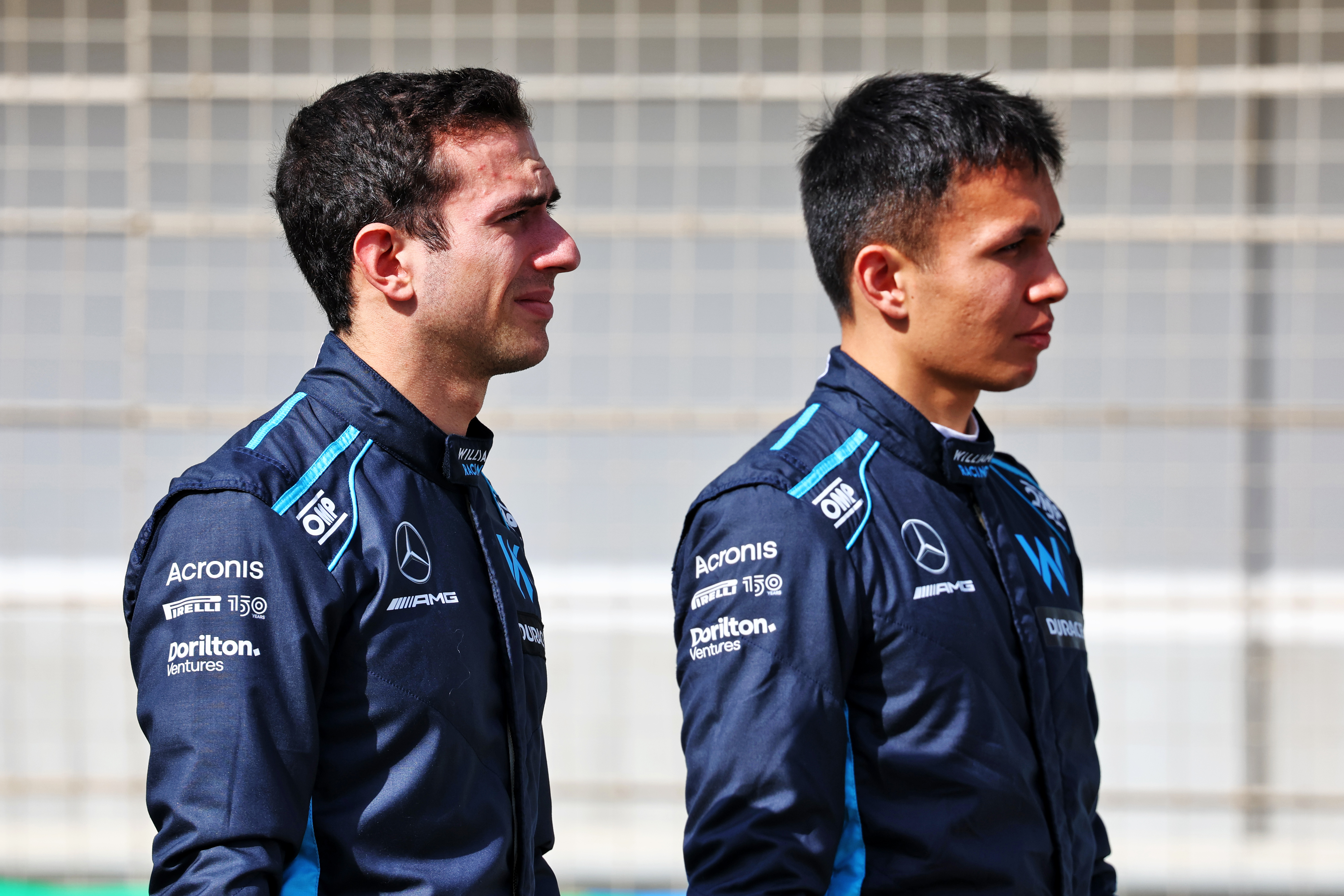
He started 2022 hoping to stake his claim as team leader following Russell’s departure, but failed to do so. A lack of confidence in the first half of the season in particular held him back, although a change of chassis at Silverstone triggered an improved run of form. At the British Grand Prix, he made Q3 for the only time in his career in wet conditions despite being in the old-specification Williams without the major upgrade, then drove well in the race despite the inevitable drop to the back in what was comfortably the slowest car in the field.
The chances of him hanging onto his drive were always slender. Latifi owed his place in the team to significant backing (he is the son of billionaire Michael Latifi) and needed to make a step forward this year to have any chance of staying on. But it never looked likely.
So as he heads out of F1, does Latifi believe he’s done himself justice?
“It depends how you interpret what you mean by having done myself justice,” he says when The Race puts the question to him. “Do I feel I’ve achieved what I wanted to achieve? No. Obviously that’s partly me, I didn’t get the performances even when there’s been a lot of issues behind the scenes within the team that haven’t helped my cause. When there haven’t been issues, I still haven’t done the job.
“In terms of what I feel I need to drive at my best and extract the most from the car, have I been able to get that? No, but at the same time, arguably, my window is just not as big as it needed to be.
“I’m definitely leaving [F1] not feeling that I’ve achieved what I wanted to. That’s partly just from not having the package that I wanted to feel comfortable with, that’s not in my control.
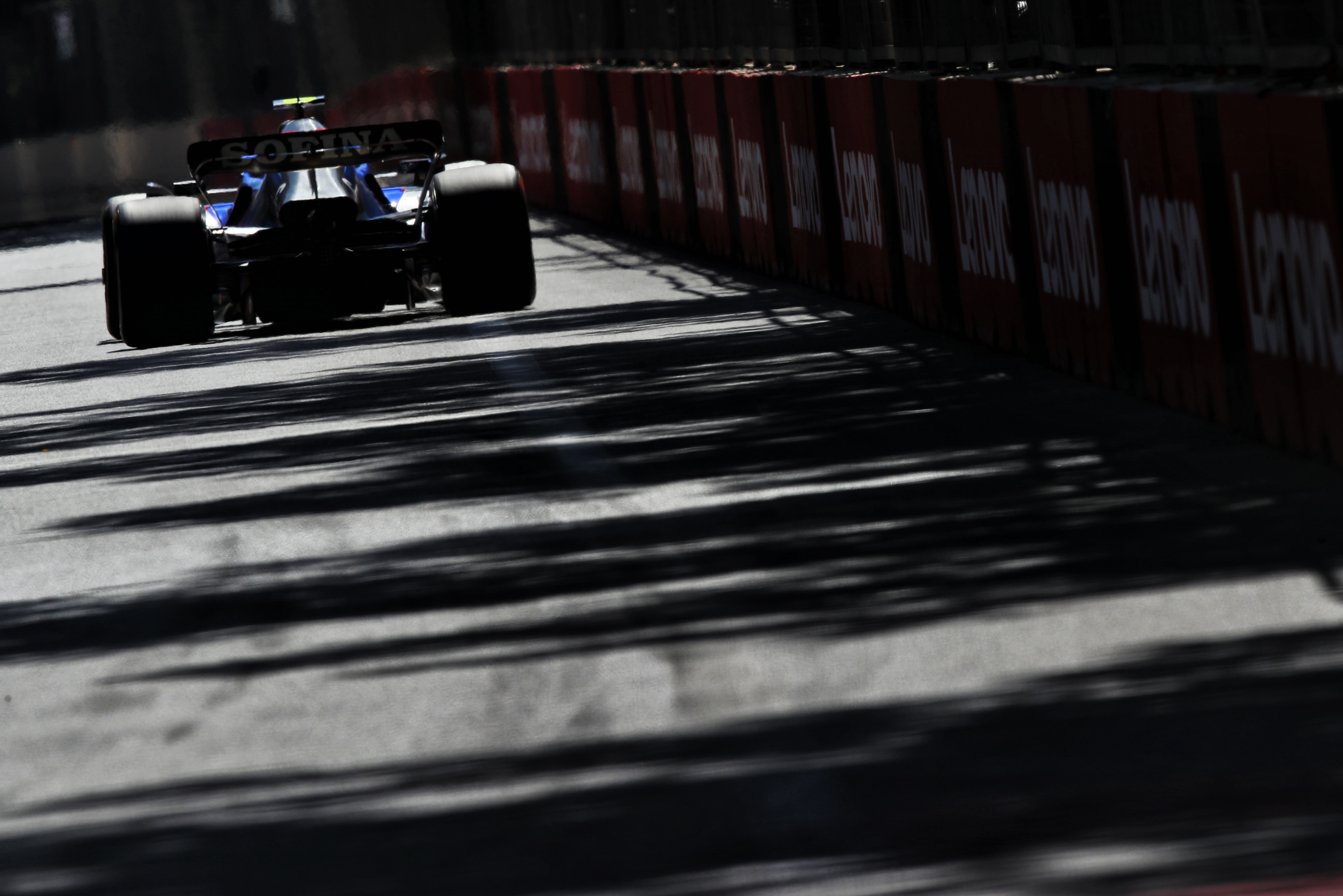
“But then I just wasn’t able to adapt to it as well as I needed to because it was just so far away from what I liked and what I needed to drive instinctively and be in that autopilot mode.”
Latifi nonetheless exits Williams team on good terms. His input was valued by a team that would have been delighted if he could have produced the performances on-track to stay given his off-track contribution.
As head of vehicle performance Dave Robson explains, Latifi’s results don’t do justice to what he did in three years with the team.
He argues that with a consistently quicker car, Latifi would have moved further along the learning curve owing to the experience of going deeper in qualifying and made bigger gains than some of those around him.
“His contribution is a lot higher than his results would suggest,” says Robson. “He’s a smart guy who works very well with all the engineers and does push the development.
“In terms of his results on the track, I’m sure he will agree they’ve not been where he wanted. A lot of that is the car and I still think that he would benefit disproportionately from a quicker car. Time in the car and the opportunity to push it and nibble away at it is a trait of him as a driver.
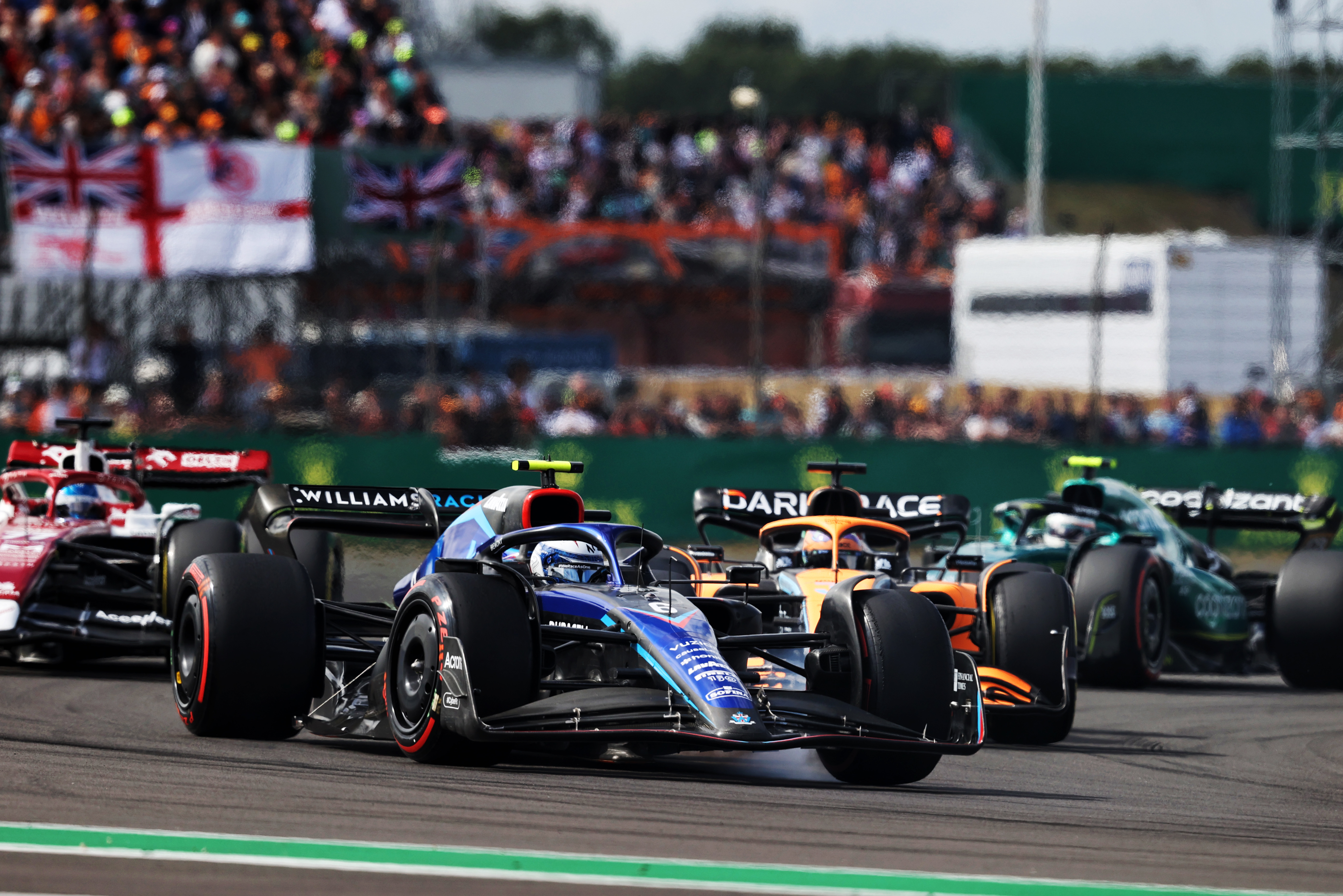
“If he had a quicker car that got into Q2 I think you’d see him improve more than everyone else. Unfortunately, the car we’ve been able to give him almost always required him just to jump in and nail it, which is perhaps not where his real natural talent driver lies. I’m sure with a quicker car you’d see him do a lot better. What’s the opposite of flattering? We’ve done that by the car not being as competitive as it should be.”
Ultimately, Latifi’s ceiling was not especially high as an F1 driver and even given perfect circumstances he wouldn’t have been a superstar. And given he had three full seasons, even in difficult circumstances, he had a fair crack of the whip in F1 and, by his own admission, didn’t make the most of it.
But he was a decent, competent performer and one whose record did have the potential to be better. He certainly deserves far more than to be remembered as a footnote in F1 history because of the 2021 Abu Dhabi Grand Prix crash that created the conditions for the season’s controversial denouement, something that earned him disgraceful abuse on social media.
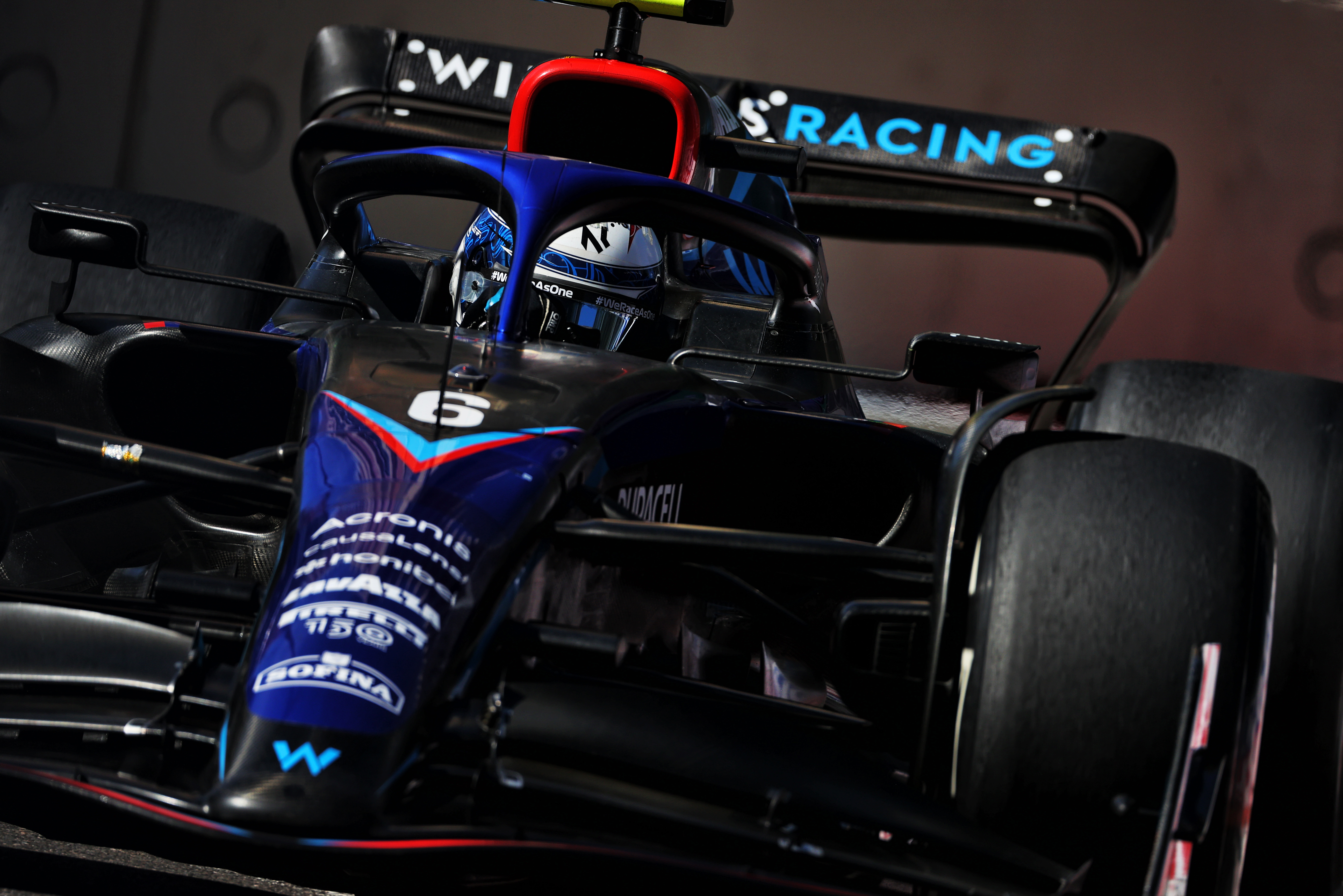
One fascinating ‘what if?’ is what might have been had he not been a late starter, given he only kicked off his karting career as a 13-year-old.
“It’s a good point,” he says when asked by The Race whether he lost out to that delayed introduction. “Experience is always experience, and there’s no such thing as bad experience. There’s no substitute for it.
“If I knew I was going to get into this path, in hindsight, would I have chosen to start earlier? Definitely, because it’s an advantage. Most racers start at eight years old and a lot of the guys on the grid were in a karts at four or five years old. So you can say I’ve missed anywhere from five to nine years of experience of just motor racing. Yes, it’s in karting, it’s maybe not as relevant as what you have to learn on the technical side of Formula 1, but motor-racing experience is still experience and when you started that young, that’s how your mind develops. You don’t know anything else.
“I started at 13. So it is a disadvantage, but when I got into the later years of my racing, I always try not to look at it as that, because otherwise it was always going to be a disadvantage my whole career. Even if I had a 10-year career in Formula 1, when you compare it to people who also had a 10-year career, there was always going to be those extra five to nine years on me. That’s just the reality of it. You cannot make up that experience but I can only do what I can do.”
There will be no 10-year career in F1 even though a return to F1 isn’t impossible given the potential financial firepower. Latifi himself accepts it’s unlikely he will return and his attention has turned to exploring opportunities elsewhere.
Wherever Latifi crops up, those who see him only as an F1 backmarker might be surprised at what he produces. And as far as his stint in grand prix racing is concerned, he can be satisfied that in difficult circumstances he did a credible job worthy of respect, proving the old adage that even the worst drivers in F1 are still extremely capable.







